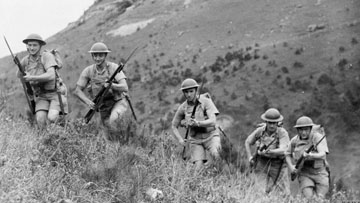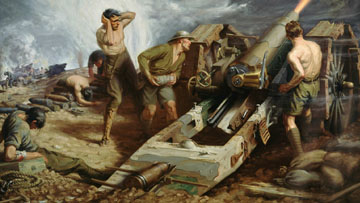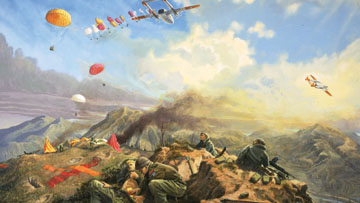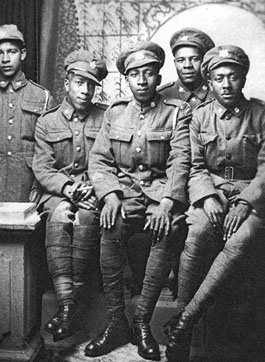Canada Remembers Times - 2016 Edition - Page 1
Beaumont-Hamel one hundred years later
Caribou monument at the Beaumont-Hamel Newfoundland Memorial.
(Photo: Veterans Affairs Canada)
In most of our country, July 1st is simply known as Canada Day. In Newfoundland and Labrador, however, it has an additional and much more sombre meaning. There, it is also known as Memorial Day—a time to remember those who have served and sacrificed in uniform.
On this day in 1916 near the French village of Beaumont-Hamel, some 800 soldiers from the Newfoundland Regiment went into action on the opening day of the Battle of the Somme. The brave men advanced into a thick hail of enemy fire, instinctively tucking their chins down as if they were walking through a snowstorm. In less than half an hour of fighting, the regiment would be torn apart. The next morning, only 68 were there to answer the roll call. It was a blow that touched almost every community in Newfoundland. A century later the people of the province still mark it with Memorial Day.
The regiment would rebuild after this tragedy and it would later earn the designation "Royal Newfoundland Regiment" for its members' brave actions during the First World War. Today, the now-peaceful Beaumont-Hamel Newfoundland Memorial overlooks the old battlefield and commemorates the Newfoundlanders who served in the conflict, particularly those who have no known grave. Special events were held in Canada and France to mark the 100th anniversary in July 2016.
Force C in Hong Kong
Canadian soldiers training in the hills of Hong Kong before the invasion.
(Photo: Imperial War Museum KF 189)
Our soldiers' first major action during the Second World War took place 75 years ago this year. 'Force C' was a contingent of some 1,975 Canadians that was largely made up of members of Manitoba's Winnipeg Grenadiers and Quebec's Royal Rifles of Canada. They set sail for Hong Kong in late October 1941 to help defend the British Crown Colony from the threat of Japanese invasion.
Only weeks after the Canadians arrived in the Far East, the enemy attacked on December 8. The outnumbered Allied defenders fought bravely before finally being forced to surrender on Christmas Day. Approximately 290 Canadians were killed and almost 500 wounded in the heavy fighting. Life for the survivors in Japanese prisoner of war camps would be incredibly harsh. More than 260 more of our men would lose their lives due to malnutrition, hard labour and physical abuse over the next four years before finally being liberated with the end of the war in August 1945.
The Gulf War not forgotten
Canadian Armed Forces CF-18 readying for take-off in the Middle East in 1991.
(Photo: Department of National Defence ISC91-5253)
The Gulf War of the early 1990s was an important chapter in Canada's military history, and this year marks the 25th anniversary of the Liberation of Kuwait and the end of the conflict. More than 4,000 Canadian Armed Forces members served in the tense Persian Gulf region in 1990-1991 as part of the international coalition of countries that came together to push the invading forces of Iraq out of neighbouring Kuwait.
Our service members played a variety of roles, from crewing three Canadian warships with the Coalition fleet, to flying CF-18 jet fighters in attack missions, to operating a military hospital, and more. It also marked the first time that Canadian women served in combat roles. The active fighting ended on February 28, 1991, when Coalition forces offered a ceasefire to Iraq after some six weeks of a devastating air campaign, followed by a ground campaign that quickly liberated Kuwait.
Fortunately no Canadians were killed in the Gulf War but it took a lasting toll on many of those who were there. Canada remembers the men and women who bravely served.
Intense fighting on the Somme
‘Canadian Artillery in Action’ war painting by Kenneth Keith Forbes depicting fighting on the Somme.
(Image: Beaverbrook Collection of War Art. Canadian War Museum 19710261-0142)
The Battle of the Somme was launched in northern France on July 1, 1916, and was one of the bloodiest chapters of the First World War. The fighting would drag on for more than four and a half months. The Canadian Corps would take part, with our soldiers' first major battle beginning on September 15 when they attacked the village of Courcelette.
The soldiers advanced behind a creeping barrage, a new tactic that saw attackers closely follow a line of artillery fire that moved forward on a carefully timed schedule. Tanks were also used—the first time in history these new weapons appeared on the battlefield. The action was a success and Courcelette was soon taken, with the French-Canadian 22e Bataillon playing an important role in capturing the village.
The Canadians would capture a number of other enemy positions in the weeks that followed in costly battles that would take a high toll on our soldiers. More than 24,000 Canadians would be killed or wounded in the Battle of the Somme, but our soldiers' courage and skill added to our country's reputation for having some of the best troops on the Western Front.
Against all odds at Kapyong
‘Holding at Kapyong’ war painting by Ted Zuber.
(Image: Beaverbrook Collection of War Art. Canadian War Museum 19900084-001)
Canadians saw heavy action during the Korean War, but the Battle of Kapyong stands out as one of our soldiers' most intense experiences. On April 24, 1951, the 2nd Battalion of the Princess Patricia's Canadian Light Infantry, along with other Commonwealth forces, defended the important Kapyong River valley during an all-out enemy attack.
The Canadians came under intense fire during the night from waves of charging enemy soldiers on the hills above the Kapyong. At times our soldiers were completely overrun and the situation so desperate they even requested their artillery to fire on their own positions to drive off the attackers. They later became surrounded and their ammunition ran low, so they had to get new supplies dropped by air.
During the fight, 10 Canadians were killed and 23 wounded, but against all odds the Princess Pats had maintained their position and held back the enemy. The Battalion received the United States Presidential Unit Citation for their bravery in Kapyong, a rare honour for a non-American military unit.
The "Black Battalion"
No. 2 Construction Battalion soldiers in 1917.
(Photo: Public domain)
Black Canadians were eager to serve their country during the First World War. In an era when our society was less inclusive, however, it was difficult for them to enlist in the Canadian Expeditionary Force. On July 5, 1916, the No. 2 Construction Battalion was formed in Pictou, Nova Scotia—the first Black battalion in Canadian history. Recruitment took place across the country, but the majority of the volunteers came from the Maritimes. Eventually, more than 600 men enlisted.
The unit was intended for support roles and served honourably in France attached to the Canadian Forestry Corps. They provided lumber to maintain trenches on the front lines. They also helped construct roads and railways. Some of the members would go on to distinguished service in combat units and earn medals for bravery, as would other Black Canadians who had managed to directly join front-line infantry units.
Today, the dedicated service of the "Black Battalion" is remembered as an important chapter in the proud tradition of military service by Black Canadians in our country.
- Date modified:





